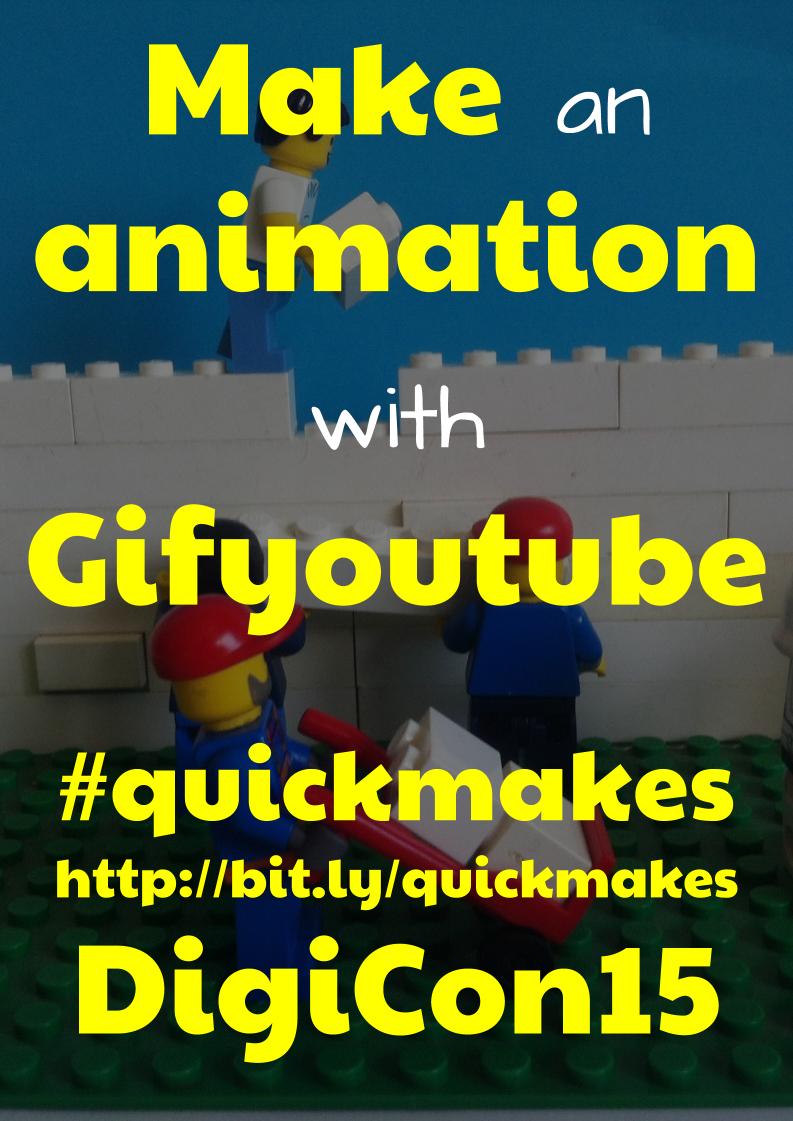
GIF stands for graphic interchange format. It is a type of loop-able image that lasts for only a few seconds. Andy Rush explains that originally they were designed for practical visual indicators, such as under construction signs for a webpage or animated email buttons. However, as with most things with technology, as time has passed, GIFs have developed a life and purpose of their own.
A key to the success of a GIF is repetition. Sometimes this is because the image creates a closed loop continually repeating. However, GIFs also have a potential to tap into our curiosity of storytelling, where although the clip may not necessarily create a closed loop, the engagement with the moment keeps the viewer watching again and again. Mariana Funes provides a range of reasons for GIFs, including the creation of the impossible, a representation of how we think, an act of becoming. While Clive Thompson explains,
The animated GIF lets us stop and ponder a single moment in the stream, to resee something that otherwise would zip by unnoticed.
What differentiates a GIF from other short video forms, such as Vine, Twitter and Instagram, is that there is no sound.
In regards to creating a GIF, there are many programs that you can use to make them, including IMGUR, Photoshop, and Camtasia. Common Craft provide a range of options, both free and paid, in their thorough guide. However, a site that often overlooked, that allows you to make GIFs quickly and easily is gifyoutube.com.
Basically, you put ‘gif’ in front of any YouTube video in order to convert it. The site provides a few options, such as adding captions, deciding start time and setting the duration. Although you can search the site for published GIFs, I prefer to publish animations at Giphy, a site best understood as the YouTube for GIFs.
Some possible uses of GIFs in education include:
- Providing comments and captions over the top of a short clip
- Creating a visual story (see Nathan Bransford explanation of the writing process)
- Make a provocation to discuss what might happen next
- Developing an explanation for a skill or instruction
- A summary in images (see this Reddit board representing entire films as GIFs)
While here are some additional resources exploring some different programs to create a GIF:
A Quick and Incomplete History of the Animated GIF – A thorough collection of reflections and resources from Andy Rush
Why Do You Want to Make a GIF at All – An extensive collection of links, perspectives and examples from Mariana Funes. For a shorter version, see her Medium post, The Animated GIF
The Animated GIF: Still Looping After All These Years – An analysis from Clive Thompson about the history and place of the GIF in society
Do You Speak GIF? – An introduction to Giphy from Mariana Funes
If You Have to Say It, Say It In GIF – A detailed account of GIFs and where they maybe heading
How to Create Explainer GIFs – How to explain your ideas quickly and easily using a GIF
Giffing – How to make a GIF using Photoshop, which includes a great collection of examples.
Making GIFs with IMGUR – How to make a GIF with IMGUR
Creating Animated GIFs with MPEG Streamclip and GIMP – How to make a GIF with MPEG Streamclip and GIMP
Soundbitification – A reflection on the rise of the short form from Amy Burvall and its impact on attention
Ooh Ooh Mr Kotter! I Know How To Optimize My GIFs! – Alan Levine provides an explanation as to how he took a GIF and optimised it using Photoshop.
Full Movie GIFs – A Reddit page dedicated to movies told as a GIF.
The Publishing Process in GIF Form – A post from Nathan Bransford unpacking the writing process using GIF images.
Lola Who – Brandon Tauszik talks about the idea of a GIF being a piece of art.
Eight-second videos are long enough to infringe on copyright, says UK judge – A case covered by Glyn Moody which touches on GIFs and copyright.
Looking at This Viral GIF Could Be the Perfect Way to Cope With an Anxiety Attack – A simple GIF designed to support breathing when stressed and anxious.
GIFDeck – A site that allows you to turn Slidedeck presentations into a GIF.
MSGif – A generator that converts your message into a GIF animation.
GIFs as Disinformation Remedy – Mike Caulfield discusses the idea of generating short instructional sequences to post in comment threads of fake material (i.e., how to fact check) rather than just Snopes-ing people.
Loose Learners Ep. 13 – GIF Again – Mariana Funes and John Johnston talk about Gifs, including how to make them and their various uses.
If you have any other resources or experiences with using GIF animations in education (or elsewhere), feel free to share. I would love to know.
An Introduction to the GIF by Aaron Davis is licensed under a Creative Commons Attribution-ShareAlike 4.0 International License.

Owen Williams discusses Facebook’s latest acquisition, Giphy. As he explains, this provides another data point to mine.
The sad irony is that many of these GIFs were crowdsourced.
John Johnston takes gifs to a new level with this dub machine.
Jeremy Badiner discusses how to use sketch.metademolab.com and screenrecording to create a GIF out of a sketch.
ᔥ “Eric Curts” in Control Alt Achieve – March 2022 (03/13/2022 09:22:50)
Kaitlyn Tiffany reflects on the demise of GIFs. She discusses the embarrassing nature in which particular GIFs are used on repeat. In addition to this, the MP4 format is a lot smaller.
Ir is interesting to look back on when I presented on GIFs as a form of quick makes.